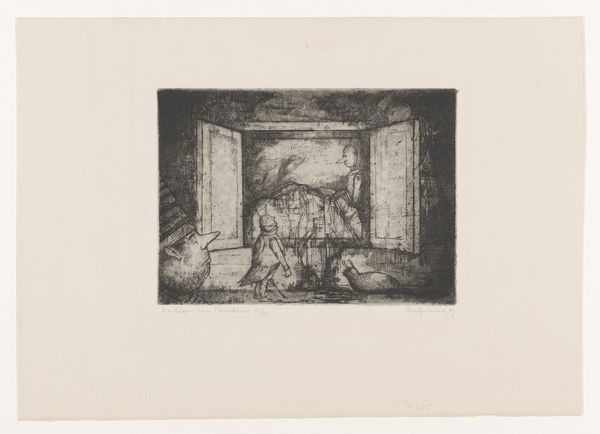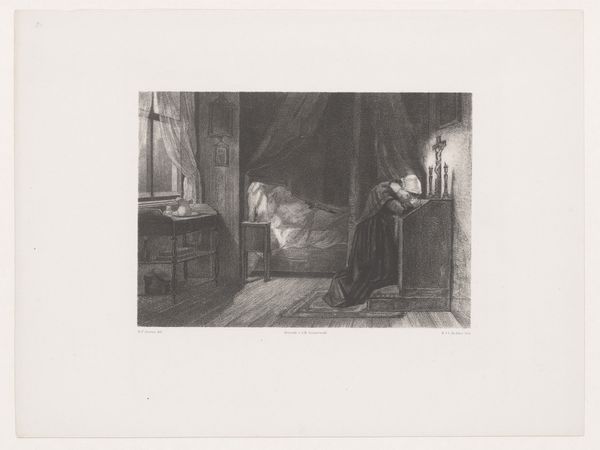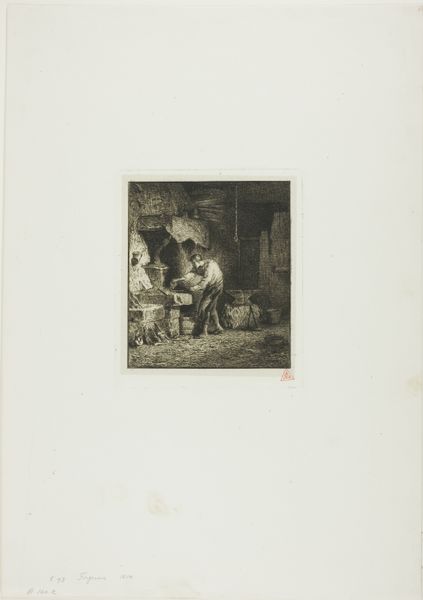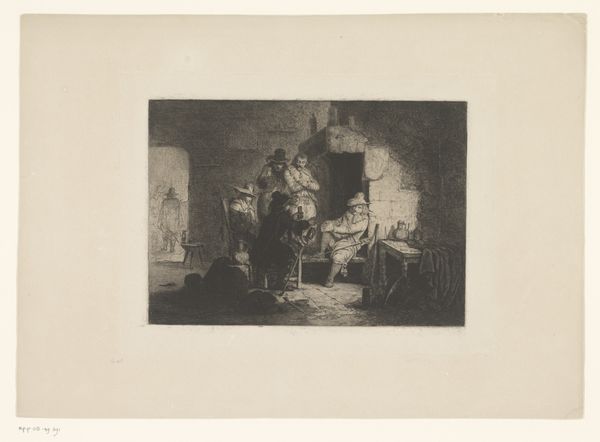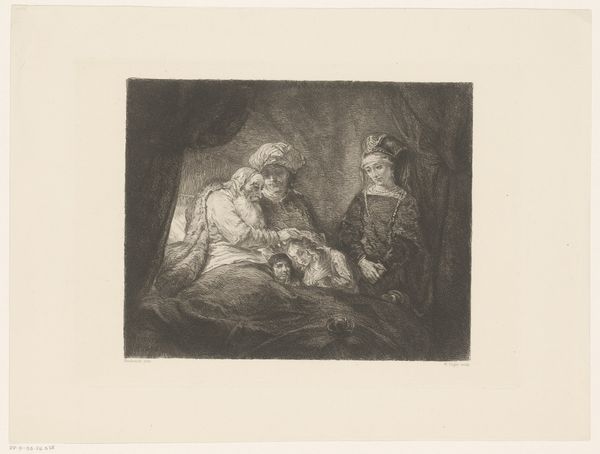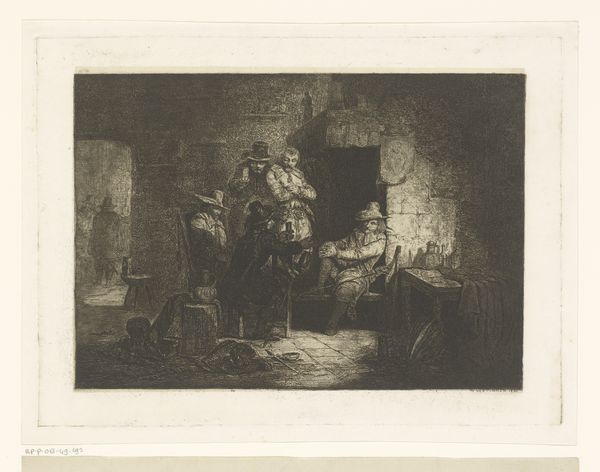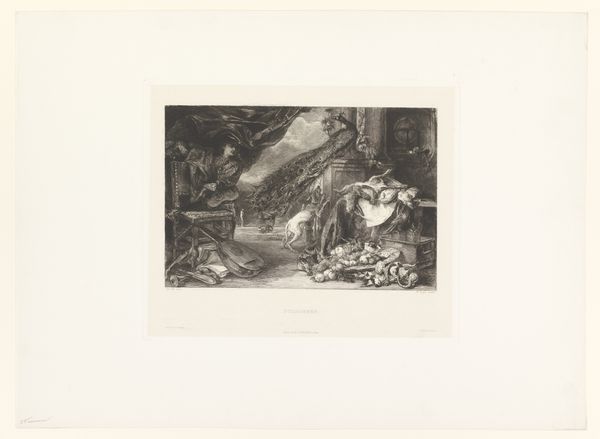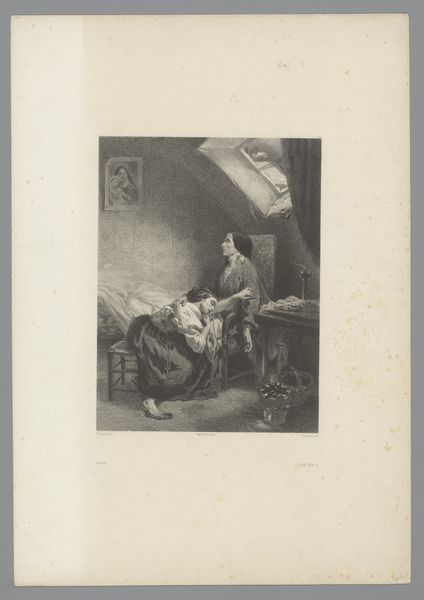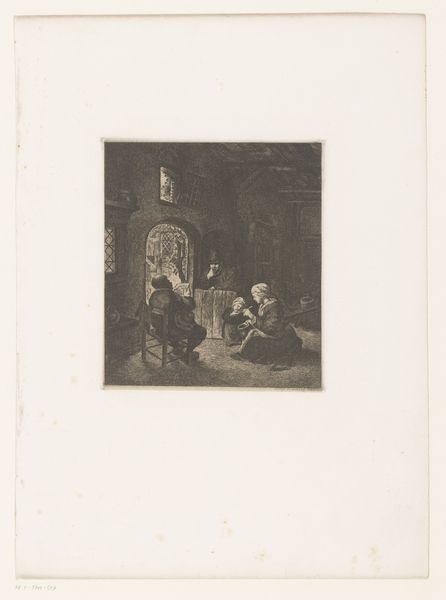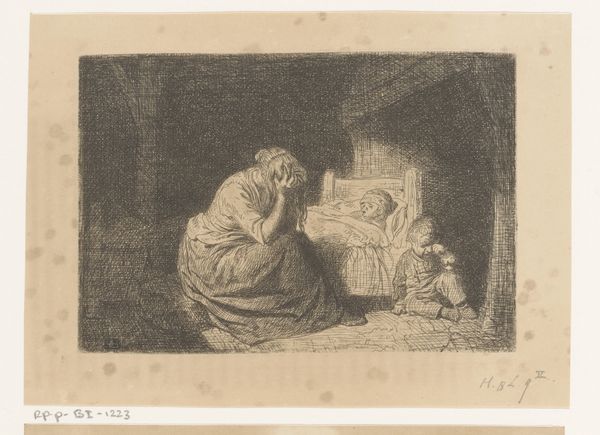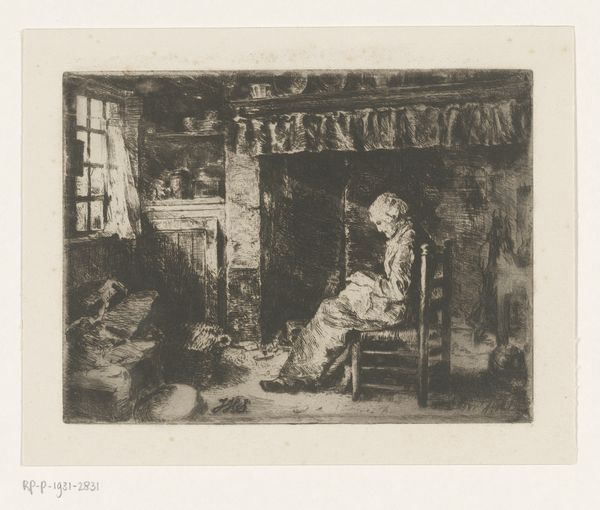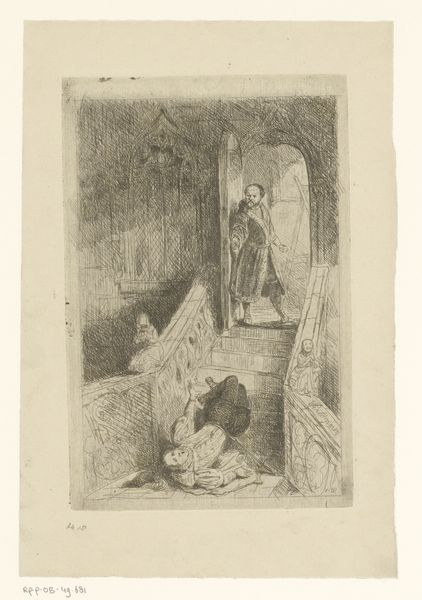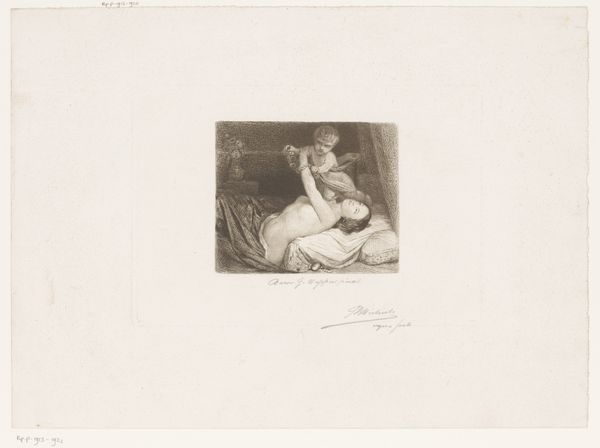
print, engraving
# print
#
figuration
#
pencil drawing
#
genre-painting
#
academic-art
#
engraving
#
realism
Dimensions: height 200 mm, width 275 mm
Copyright: Rijks Museum: Open Domain
Curator: The work before us, dating from between 1847 and 1889, is "Heilige Familie in een interieur," or "Holy Family in an Interior" by William Unger. The piece you're viewing is an engraving. Editor: My initial impression is one of quiet intimacy. The almost monochromatic tones create a feeling of enclosure, a domestic sphere captured in a very private moment. The lighting, muted as it is, draws the eye immediately to the Madonna and Child figure. Curator: Absolutely. It exemplifies genre painting of the time, drawing on realistic details. We see a Madonna figure depicted not in celestial robes but in the quotidian garments of the 19th century. It certainly invites conversations about the idealization versus the reality of motherhood. Editor: Indeed. By removing the classical halo, Unger prompts us to re-evaluate the figure as an icon, especially from a feminist perspective. We're confronted with a mother figure stripped bare, without obvious signs of authority. Her care becomes all the more apparent and precious in its humble setting. Curator: Consider too how this was publicly displayed at the time. Galleries often catered to middle-class audiences seeking reflections of their own lives. A work like this provides moral instruction in domestic virtue, presented as art rather than sermon. The political dimensions are often overlooked. Editor: And what kind of virtues does it highlight? The way the maternal figure is shown seems to propose that womanhood exists within parameters that define a "suitable" wife. In a social and historical reading, the artwork reinforces normative representations that emphasize themes of domesticity. It definitely asks to explore not just representation, but whose representations were valued. Curator: It's a conversation that demands contextual understanding, definitely. William Unger has offered a glimpse into one reality of the past and a reflection of a socially charged subject. Editor: It highlights questions of representation that still affect how women perceive themselves and each other today. Examining how this piece plays within that history can allow for an updated cultural dialogue.
Comments
No comments
Be the first to comment and join the conversation on the ultimate creative platform.
